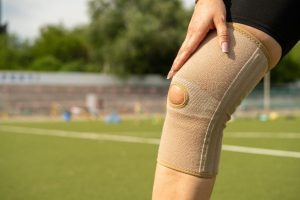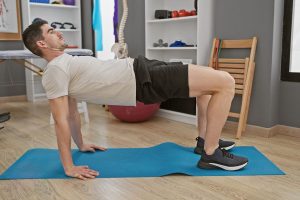We all know that in athletics, every little advantage counts. We’re always working to gain that competitive edge. What if we told you that something as simple as physical therapy for athletes could provide you with that edge?
Physical therapy offers significant benefits for athletes by enhancing general strength and mobility, leading to improved performance and fewer aches and pains. It helps athletes refine their techniques through better neuromuscular control and corrects muscular imbalances, prolonging their athletic careers.
Additionally, physical therapists provide professional oversight during recovery, reducing the likelihood of injuries and allowing athletes to perform confidently and efficiently. In this article, we’ll cover what have been, in our experience, the greatest benefits these athletes can expect from a sports therapy program.
Benefits of physical therapy for athletes
1. It will complement your general strength, mobility, and conditioning programs
If you’re engaged in athletics on a competitive level, you’re undoubtedly participating in some type of strength and conditioning programs already (bonus points if your coaches are also including mobility and flexibility work in their programs!).
One thing we’ve noted over the years is that athletes who are also actively participating in physical therapy or prehabilitation perform better during their training sessions. They’ve got less aches and pains, less mobility restrictions, use more full ranges of motion on their exercises, and otherwise get more out of their training.
Who wouldn’t want a boost in the weight room that carries directly over to performance in their sport?
2. Greater neuromuscular control will allow you to refine your technique
Every sport comes with it a set of techniques that must be learned and made into second nature through repetition. With that reality comes a set of movement patterns that can be trained to a very high level, if the athlete has great neuromuscular control.
One of the elements we can work on with athletes is to develop this neuromuscular control in the range of motion necessary to perform the movement pattern, directly translating to efficient movement on the field.
3. Avoidance of muscular imbalances
The flip side of the element above is the avoidance of muscular imbalances brought about by hundreds upon hundreds of repetitions to hone a technique. If you participate in a sport, you probably don’t have to look very far to find an athlete who’s been hamstrung by pain as a result of overdeveloping one muscle group and completely neglecting another.
One of the sports physical therapist’s specialties is spotting these imbalances and implementing targeted strength and mobility programs to correct them, prolonging the athlete’s longevity in their sport and improving their quality of life overall.
4. You’ll have a trained eye watching over your recovery efforts
We all know (or should know) that recovery is just as important as our efforts on the field, court, or weight room. And we’ve all made efforts to “walk it off” at one time or another.
The trouble with that is that we often don’t learn the lessons we need to from the small injuries we incur over time. Consider this – small aches and pains, little injuries, and nagging issues are often the result of a weakness in your kinetic chain somewhere.
Athletes are often active far more often than the typical individual who is simply trying to meet the minimums for exercise, and therefore have far greater recovery demands to think about than even the typical gym-goer.
With the help of a physical therapist, you’ll have a professional set of eyes watching over you, providing you with feedback on your treatment plan, and helping you plug the holes in your kinetic chain that are holding you back.
5. Athletes in physical therapy get injured less often
Athletes who are aware of their own individual weaknesses and actively working to improve them are less likely to have them become major issues. Ankles, wrists, elbows, shoulders, hips, knees – all of these portions of the body come with their own set of sport-specific mobility and strength requirements.
While major lifts performed in the gym do an excellent job of bringing up your level of strength and function overall, applying a “one size fits all” solution to an individual can only take you so far.
Having a physical therapist to guide you along the process of building sport-specific strength can be invaluable. It takes the guesswork out of the equation, allows you to avoid sports injuries, and allows you to play with confidence rather than be held back by lingering worries about injuries rearing their ugly heads along the way.
Physical therapy isn’t a replacement for good training, it’s an adjunct
One final point we’d like to make is that we aren’t saying that physical therapy is a replacement for a good strength and conditioning program, or for time spent perfecting your technique out on the field. For more details on this topic, see our full article on personal trainers versus physical therapists.
What we are saying is that the athlete who is also doing physical therapy will experience reduced pain, shield themselves against future injury, increase flexibility, and expect more out of their ligaments, joints, and muscles.
Conclusion
While it’s tempting to try to walk off every little injury or perhaps just drill your sport harder, one of the cheat codes that many athletes overlook is physical therapy. Picking a physical therapist who specializes in sports and athletics can be a huge benefit to your athletic career over the long haul.
Injury prevention and pain relief can go a long way toward keeping you on the field training, getting better while your competition is on the sidelines!
If you’ve got an athletic endeavor that you’re actively working to improve, go ahead and give physical therapy a try!

















